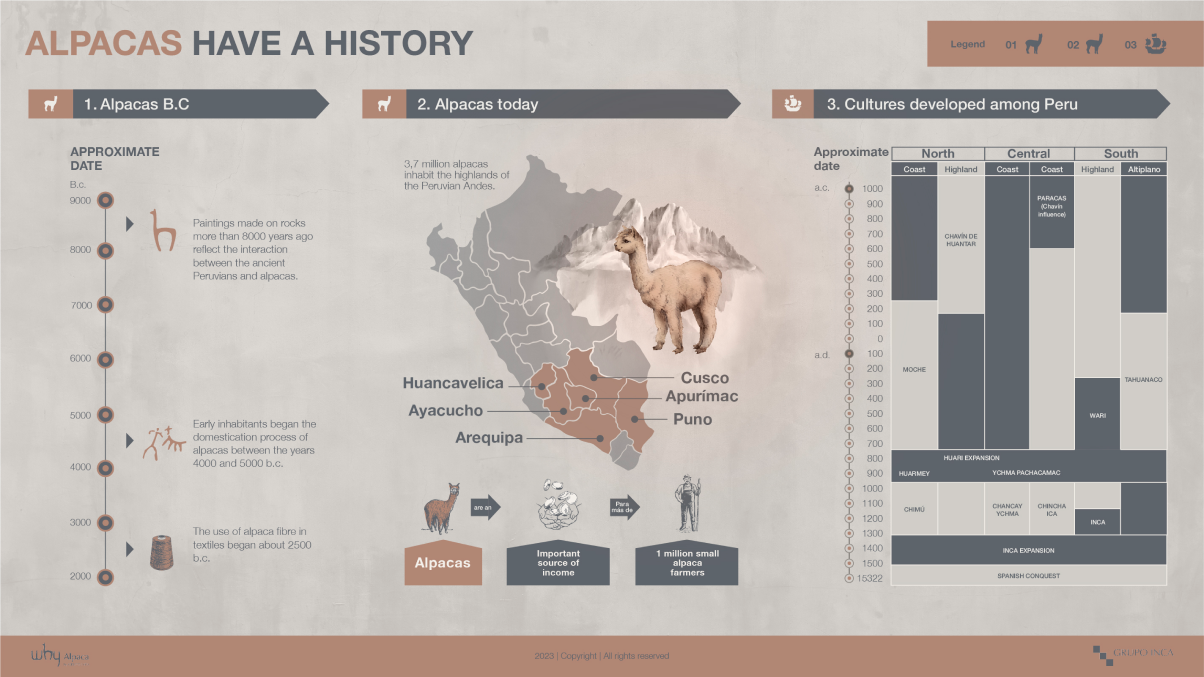Alpacas were domesticated between the year 4000 and 5000 B.C.
“Alpaca” is a Spanish word derived form the Aymara name “Allpacu”, or the Quechuan names “Pacos” or “Pacoshas”. Paintings made on rocks more than 8000 years ago were a reference to the interaction between the ancient Peruvians and the alpacas. Early inhabitants began the domestication process of alpacas between 4000 and 5000 B.C.
Alpacas had a strong impact on the ancient Peruvian cultures.
The use of alpaca fibre in textiles began around 2500 B.C., and became increasingly important through time in ancient Peruvian cultures. Woven textiles reflected different levels of power and were often given as tribute to the State or to local lords in return for favours or services, such as in barter trading.
Alpacas survived the Spanish conquest.
It is estimated that there were more than 10 million alpacas in Peru before the Spanish conquest, and only one out of ten survived. The Spanish invasion and conquest resulted in a severe setback to the breeding development of alpacas. Also, the importation of foreign cattle resulted in the displacement of alpacas to higher, colder and more arid areas. At present, it is estimated that 3,7 million alpacas inhabit the highlands of the Peruvian Andes (In the areas of: Puno, Arequipa, Cusco, Ayacucho, Huancavelica and Apurimac), representing 80% of the worldwide alpaca population.
Alpacas are an important source of income for many Andean families.
To more than one million small alpaca farmers in the central Andes of South America, alpacas are an important element of cultural identity. According to the Peruvian National Institute of Statistics and Informatics (INEI) census in 2012, a population of 3,7 million alpacas support these Peruvian families.





